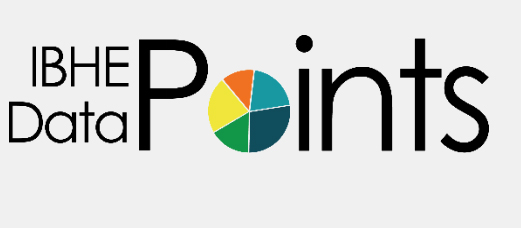
Thought Paper on Institutional Closure
A State Perspective on Consumer Protection in the Changing Higher Education Landscape: Practical Steps and Recommendations in Cases of Institutional Closure
Gretchen Lohman, Ph.D.
Senior Associate Director for Academic Affairs
Stephanie Bernoteit, Ed.D.
Deputy Director for Academic Affairs
As published in the
Higher Learning Commission’s
September 2019 Issue of The Leaflet
Introduction
Increasing volatility in the higher education sector has resulted in a growing number of institutions undergoing changes of control through mergers and acquisitions, and in some cases, closure. In the Chronicle of Higher Education, Bauman & O'Leary (2019) report that more than 150 postsecondary institutions in the United States closed in 2014 with this number continuing to trend upward in the intervening years. Since 2016, the Illinois Board of Higher Education (IBHE) has provided support for and responded to the closure of 40 degree-granting institutions.
The closure of a college or university takes place under a range of conditions such as the phase out of a branch campus, acquisition by another institution, or the difficult decision to shut the doors of the institution entirely. Institutional closures may be the result of declining enrollment and financial instability, delay or loss of access to Title IV federal financial aid monies, sanctions by regulators, or a combination of these and other factors. The timing and management of the closure may be orderly and well-communicated or precipitous in nature. In all cases, the closure of a college or university has profound effects for students and their families, alumni, faculty, staff, and surrounding communities. However, the short- and long-term consequences for students attending an institution that undergoes abrupt closure are particularly severe, ranging from issues with student loans to difficulty accessing their transcripts for the purposes of employment or transfer to another school (Vasquez and Bauman, 2019).
The short- and long-term consequences for students experiencing an abrupt closure are particularly severe, ranging from issues with student loans to difficulty accessing their transcripts for the purposes of employment or transfer to another school.
Institutional closures also result in new challenges for state higher education agencies to address their mandates regarding quality, access, and consumer protection. This state-level work must occur in the broader context of, and in partnership with, the other members of the regulatory Triad, which include the U.S. Department of Education and various accrediting bodies. The State Higher Education Executive Officers Association (SHEEO) suggests ways to strengthen the state authorization process to improve quality and consumer protections in a July 2019 paper on this subject that calls attention to the importance of a combination of thoughtful state and federal policy enhancements “to ensure all students receive a high-quality postsecondary education in a rapidly evolving landscape” (Tandberg, Bruecker, Weeden, 2019, p. 5). As higher education leaders and policymakers undertake the critical work of improving the functions and interactions of the Triad, it seems likely that institutional closures across the nation will continue. “Consumer behaviors have changed, technology demands are increasing, and deflationary forces are diminishing tuition revenues” causing strains on the traditional higher education business model (Beyer, 2019, p. 10), increasing the likelihood of future closures for institutions that do not adapt.
State higher education agencies such as IBHE are, by design, often the first place affected students and other stakeholders turn for information and options as they deal with the ramifications of an institutional closure. The purpose of this paper is to provide insight into the work undertaken by state higher education agencies to support affected students and other stakeholders when a postsecondary institution closes. This paper begins with a brief overview of the statutory authorities of the Illinois Board of Higher Education and occurrences of applying these authorities to cases of closure. Next, practical steps to protect consumers and inform stakeholders during and after closure are identified and include the following:
- Identify and resolve gaps in state policy;
- Create a closure checklist;
- Establish state-level, cross-agency communication;
- Partner with the Triad;
- Secure transcripts and correct errors;
- Support educational options for affected students;
- Determine last date of attendance;
- Maintain a website; and
- Work with licensing bodies and specialized accreditors.
Throughout the paper several key takeaways and recommendations are embedded for state higher education agencies and higher education leaders to consider. In providing this practical perspective, this paper intends to contribute to the conversations occurring among members of the regulatory Triad, higher education leaders, and policymakers about ways to improve consumer protections and quality in higher education today.